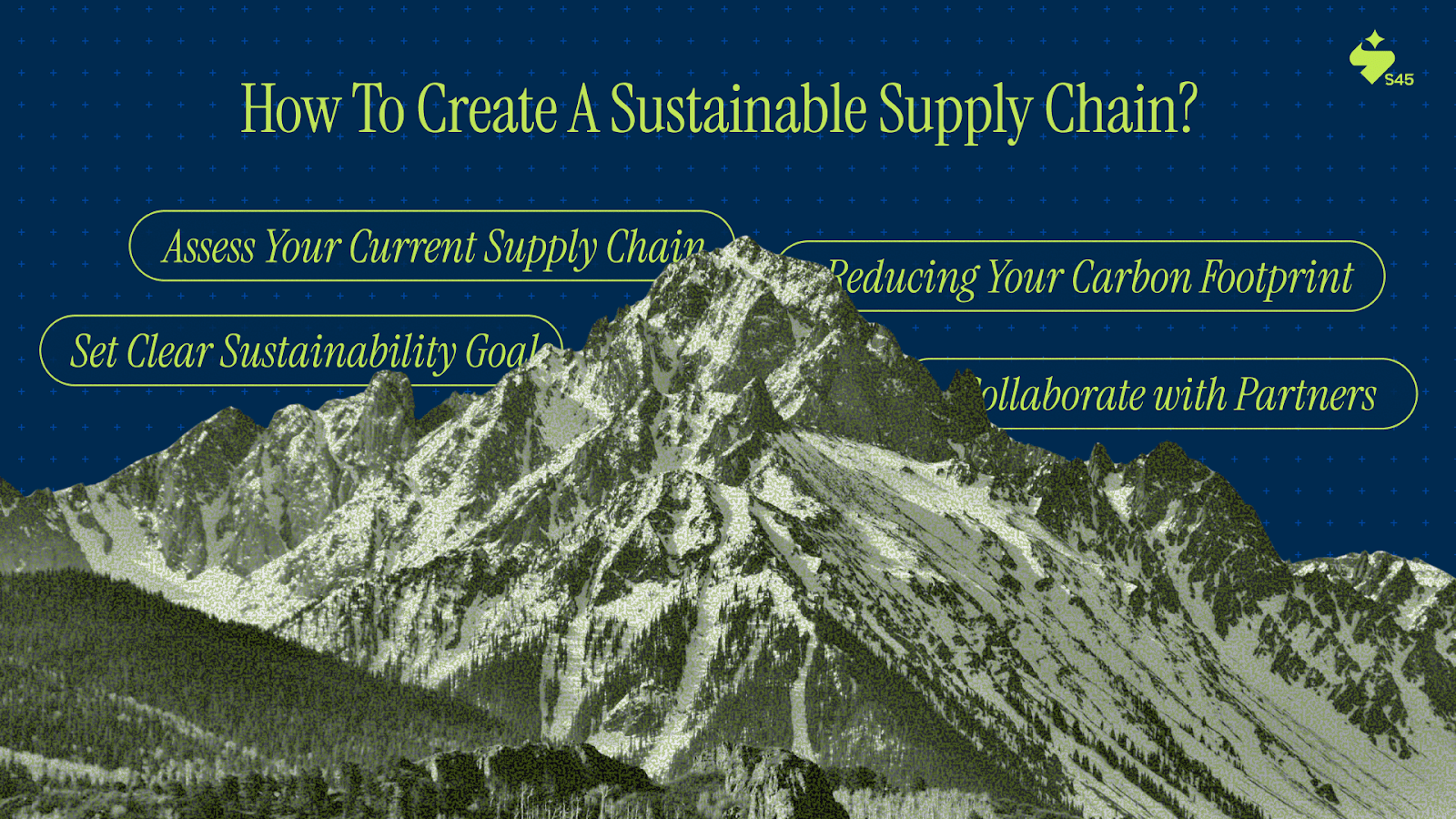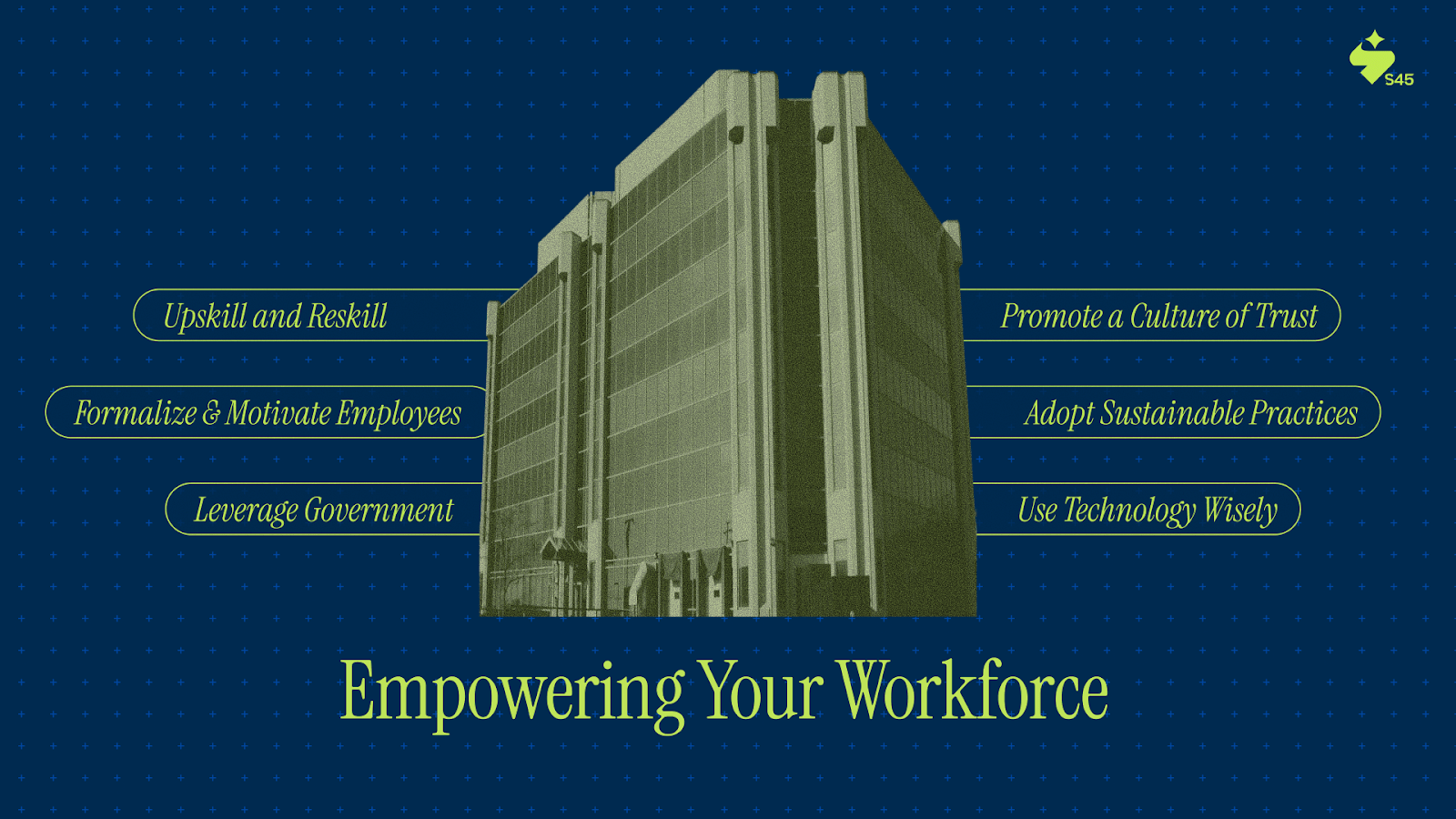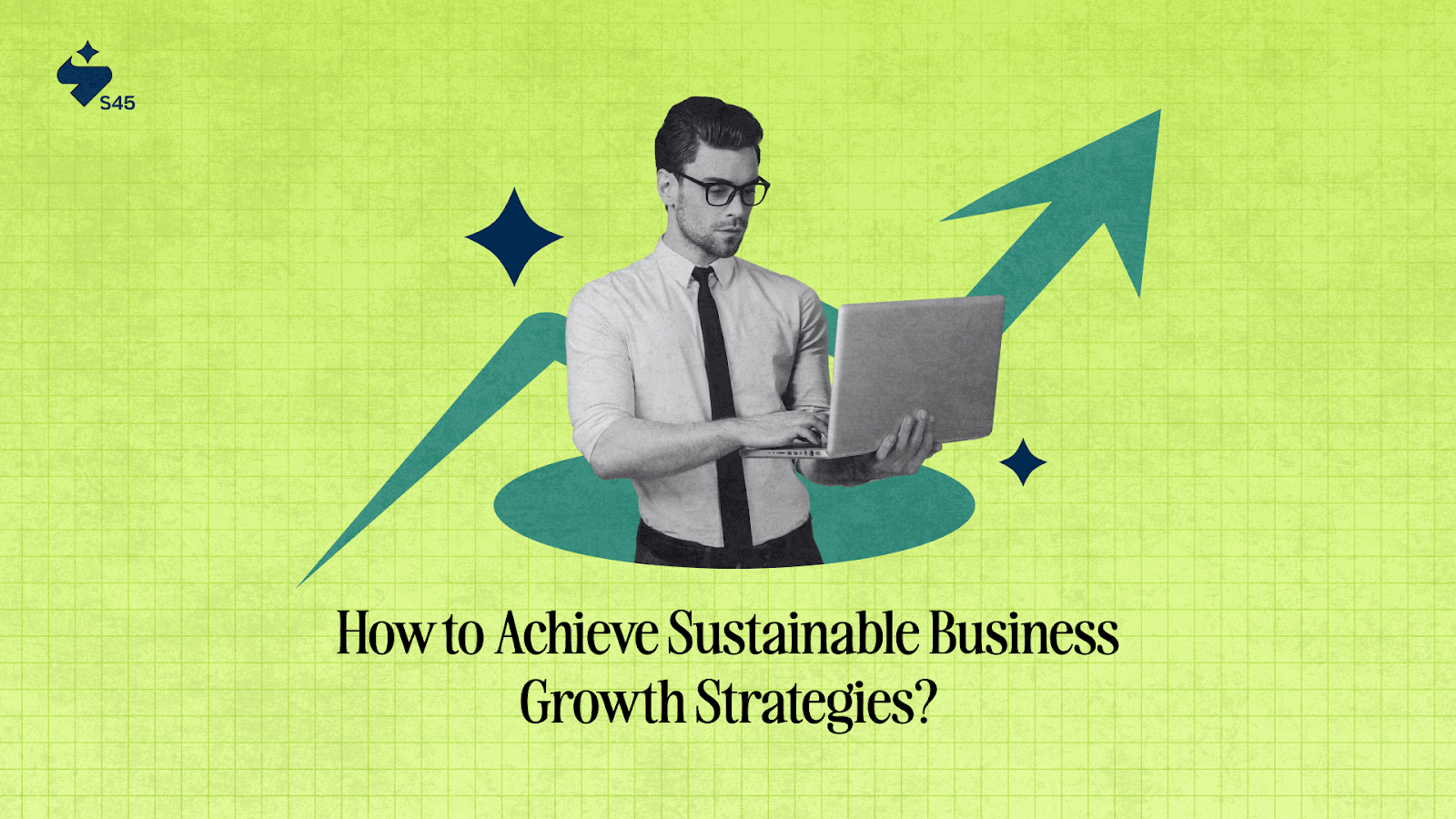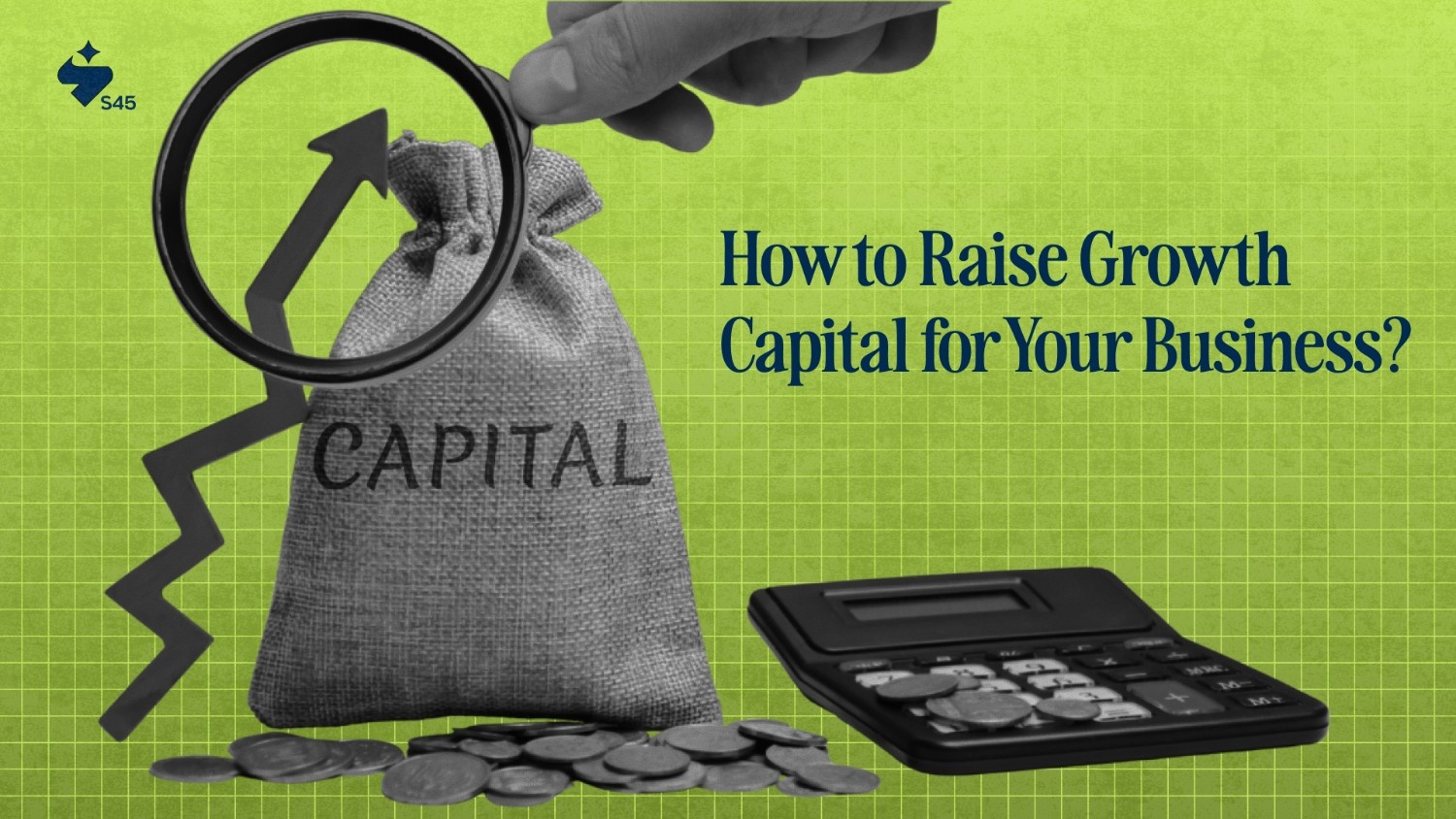
At a Glance:
- Strategic Planning: Build a sustainable growth roadmap using SWOT analysis and SMART goals, balancing People, Planet, and Profit while leveraging government schemes like ZED certification.
- Digital Integration: Adopt cloud computing and data analytics to streamline operations, create eco-friendly supply chains through local sourcing and ethical partnerships.
- Financial Strength: Master cash flow management, explore diverse financing options, and invest in workforce upskilling to boost productivity and retention.
- Smart Scaling: Navigate regulatory compliance requirements while partnering with growth enablers for capital, mentorship, and sustainable expansion support.
Sustainable business growth is a major challenge for India’s MSME founders. They face fierce competition, shrinking margins, and the constant pressure to keep up with market shifts. Yet, despite these hurdles, a recent Deloitte report found that 91% of Indian business leaders have increased their sustainability investments over the past year. Why? Hopes for long-term success and growing concerns about climate and resource risks drive them.
The message is clear: without strong growth strategies, MSMEs face the risk of stagnation or even closure. In this blog, we’ll explore practical approaches to help entrepreneurs not only survive but truly thrive in today’s ever-evolving economic landscape.
Why Sustainable Business Growth is Key for Indian MSMEs
Sustainable business growth is key for Indian MSMEs, and here’s why it matters for both your business and the economy. MSMEs play a huge role in India, contributing 30% to GDP, 36% to manufacturing, and 45% to exports. Their growth directly impacts job creation and national prosperity.
So, why should you focus on sustainability?
- Economic Backbone of India: MSMEs are the second-largest job creators in India, employing over 110 million people. By adopting sustainable practices, you can drive growth, create jobs, and support both urban and rural communities.
- Staying Competitive Globally: By 2025, 13% of MSMEs will focus on green and sustainable sectors, which is a smart move. Sustainability helps you meet global market demands, unlock investment opportunities, and stay ahead of the competition.
- Climate Resilience and Innovation: With over 57% of India’s districts at high climate risk, sustainability is a must. Embracing eco-friendly products, waste reduction, and circular processes can help your business weather climate disruptions like floods and heatwaves.
- Support from the Government: The Indian government is backing the move towards sustainability through programs like the ZED (Zero Defect, Zero Effect) certification and green finance schemes, helping you upgrade your processes and stay competitive.
So, you're ready to grow sustainably. Where do you start?
It is about balancing the three P's: People, Planet, and Profit. The journey begins with a clear, forward-looking plan that acts as your business's blueprint.
1. How to Develop a Strategic Plan for Sustainable Growth of Your SME?

To create a powerful business growth strategy in India, you need a detailed roadmap. Start by defining your core values and your vision for the next 5 to 10 years, not just for the next quarter. Set realistic, measurable goals for growth, efficiency, and sustainability. This careful planning is the very foundation of sustainable business planning in India.
- Phase 1: Assess Your Current Position: Start with an honest SWOT analysis to identify your business’s Strengths, Weaknesses, Opportunities, and Threats. Review your financials to understand your current revenue and costs. This phase is your reality check; knowing where you are is the first step to knowing where you're going.
- Phase 2: Define Your Future: Establish a clear vision and mission for your company. Set SMART goals (Specific, Measurable, Achievable, Relevant, Time-bound) for growth. For example, instead of "increase sales," aim for "increase sales by 15% in Q4." You can join S45’s founder community to access proven frameworks and mentorship.
- Phase 3: Create and Execute Your Action Plan: Brainstorm strategies based on your analysis and goals. Detail the "how", assign responsibilities, set deadlines, and allocate resources. Regularly monitor progress and review your KPIs. This ensures you stay on track and can adapt to market changes, building a resilient and profitable business for the long term.
Now that you have your plan, how do you make it happen efficiently? The answer lies in technology. You might think tech is expensive or too complex, but it's a powerful tool that can make your business leaner, smarter, and more sustainable.
2. The Role of Technology in Driving Sustainable Growth for MSMEs
For technology for business growth in India, don’t just think about having a website. Think bigger. Adopting cloud computing, modern software, and data analytics can streamline your operations, reduce waste, and give you the data you need to make smarter, more sustainable decisions. This is how you drive real innovation in MSMEs in India.
- Assess Your Current Situation: Start with a SWOT analysis to identify your business's Strengths, Weaknesses, Opportunities, and Threats. Be honest about your financial health to get a clear picture of what's working and what isn't.
- Define Your Goals: Establish a clear vision and mission. Then, set SMART goals, goals that are Specific, Measurable, Achievable, Relevant, and Time-bound. For example, aim to "increase online sales by 15% in the next six months."
- Develop Your Action Plan: Brainstorm strategies to achieve your goals. Break each strategy into smaller, actionable steps. Assign responsibility for each task and set a deadline. This turns your big ideas into a concrete to-do list.
- Monitor and Adapt: A strategic plan isn't a static document. Regularly review your progress using Key Performance Indicators (KPIs) and be ready to adapt your plan as the market changes. Consistent monitoring ensures your business stays on a path of long-term, sustainable growth.
Your business doesn’t operate in a vacuum. It’s part of a larger network, your supply chain. This is where you can have a massive positive impact, and it’s a critical area for building long-term resilience.
3. How to Create a Sustainable Supply Chain for Your Business

A sustainable supply chain in India requires a commitment to being responsible from the moment you get your raw materials. Try sourcing locally to cut down on transportation emissions, use minimal packaging, and set up a solid waste reduction program. This is how you build a truly green supply chain for MSMEs.
- Assess Your Current Supply Chain. Start by mapping out every step, from raw materials to the final customer. Identify areas with excessive waste, high energy consumption, or inefficient processes. This gives you a baseline for improvement.
- Set Clear Sustainability Goals. Establish specific, measurable, and time-bound goals for your business. Focus on key areas like reducing packaging waste, lowering carbon emissions, or ensuring ethical labor practices with your suppliers.
- Collaborate with Partners. Choosing ethical suppliers in India isn’t optional anymore. You need to do your research to make sure your partners follow fair labor practices and protect the environment. Ask for certifications and transparency reports.
- Reducing Your Carbon Footprint Through Efficient Logistics: Every kilometer a product travels adds to its carbon footprint. Focus on eco-friendly logistics in India by optimizing your delivery routes, combining shipments, and exploring greener transport options. This commitment to reducing carbon footprint in India not only helps the planet but also often reduces your operating costs.
Even with a great plan and smart tech, your business can’t grow without a strong financial foundation. This is about more than just making a profit; it’s about managing your money in a way that ensures the business can thrive for decades.
4. How to Manage Finances for Sustainable Growth
Your financial planning for MSMEs in India should focus on building strong reserves, managing debt wisely, and optimizing your working capital. Sustainable finance is all about getting steady, healthy returns over many years, not chasing risky, short-term wins.
Here are some key strategies to help MSMEs manage finances effectively:
- Access to Affordable Credit: Don’t shy away from exploring both traditional and alternative financing options. Take advantage of new government schemes. Institutions like SIDBI and credit guarantee schemes can help ease cash flow pressure and fund your business upgrades.
- Effective Cash Flow Management: Keep a close eye on your receivables and payables, stick to your expense discipline, and build cash reserves. Tools like AI-powered accounting software and cloud-based systems can give you real-time insights and reduce delays or leaks in your cash flow, vital for smooth operations and growth.
- Scenario-Based Financial Planning: The market can be unpredictable, so plan for different scenarios, like supply chain disruptions, inflation, or sudden demand spikes. This way, you’ll be able to pivot quickly, renegotiate contracts, and avoid unnecessary losses.
- Digital Adoption and Integration: Embrace digital tools for better bookkeeping, compliance, and analytics. They can also streamline your supply chain and working capital management. Government schemes like the Digital MSME Scheme and ONDC onboarding can help boost your financial agility.
- Collaborative and Embedded Finance: Look into partnerships with NBFCs, industry clusters, or corporate supply chains to improve loan terms or share resources. Also, consider integrating financial services directly into your business processes to make day-to-day operations smoother.
- Policy Literacy: Stay updated on government incentives, classification criteria, and compliance guidelines. This knowledge can help you take advantage of subsidies, tax benefits, and low-risk borrowing as your business scales. A strategic partner like S45 can help personalize your financial strategies to align with your vision.
Your people are your most valuable, and often most sustainable, asset. A business is only as strong as its team. Investing in them is the smartest decision you can make for your long-term success.
5. Empowering Your Workforce for Sustainable Success

A positive and supportive company culture for growth in India fuels innovation and loyalty. When your employee engagement for MSMEs is high, you’ll see lower turnover and a huge boost in productivity.
Here’s how you can empower your workforce:
- Upskill and Reskill Regularly: Focus on hands-on training in both technical skills (like machine handling, quality control) and soft skills (customer service, communication). Add financial literacy and leadership training for business owners and supervisors to improve decision-making and planning.
- Formalize and Motivate Employees: Move towards formal employment with clear roles, workplace safety, and compliance. Formal employees tend to be more invested, motivated, and productive.
- Leverage Government and Industry Support: Use available government schemes for skill development, technology upgrades, and sustainability certifications. Join industry clusters and associations for shared resources, training, and market access.
- Promote a Culture of Trust and Ownership: Encourage open communication and empower employees to make decisions relevant to their work. When people feel trusted and part of the growth story, they contribute more enthusiastically.
- Adopt Sustainable Practices Hands-On: Train the workforce on sustainability practices relevant to the business, such as waste reduction, energy efficiency, or eco-friendly materials. This not only reduces costs but also meets market demand for green products.
- Use Technology Wisely: Even basic digital tools for accounting, customer management, or production help improve efficiency and keep the business competitive.
You’ve built your business from the ground up, but a key part of long-term stability is making sure you’re playing by the rules. Compliance is a non-negotiable part of building a reputable, sustainable business.
6. What You Need to Know About Regulatory Compliance in India
Proactive regulatory compliance in India helps you avoid costly fines and reputational damage, securing your business’s long-term growth.
Here’s what you need to know about regulatory compliance:
- Compliance Overload: MSMEs in India face over 1,450 regulatory requirements annually, covering labor laws, taxes, environmental norms, and more. This complexity causes high costs and significant risks for minor mistakes.
- Udyam Registration Is the Foundation: Formalizing the business with Udyam registration is essential. It legitimizes the enterprise, making it eligible for government schemes, subsidies, loans, and participation in tenders.
- Stay on Top of Tax Compliance: Timely GST registration and filing (including GSTR-1, GSTR-3B), regular Input Tax Credit reconciliation, and annual Income Tax Return filing are vital. These processes improve cash flow and credibility with lenders and partners.
- Labor Law Adherence: Compliance with EPF, ESI, Shops Act, and payroll regulations builds trust with employees and reduces legal risks. Labor compliance is a major part of MSME regulatory obligations and penalties.
- Environmental and Industry Licenses: Obtain necessary clearances related to pollution control, fire safety, and other sector-specific approvals. This ensures compliance and supports sustainable operations.
- Use Digital Tools and Expert Support: Leverage digital accounting software and consult chartered accountants or compliance experts. These resources help you manage paperwork efficiently and keep pace with frequent legal updates.
- Benefit from New MSME Classification Changes: Understand the latest MSME classification thresholds introduced in 2025. These revised limits allow your business to grow without losing government benefits.
- Call for Simplified Compliance: While compliance remains challenging, governments are working to simplify processes, digitize filings, and reduce paperwork. These efforts aim to ease your compliance burden and support sustainable growth.
The ultimate goal is to grow your business without sacrificing your principles. So, how do you handle the challenges that come with scaling while staying true to your sustainable vision?
How S45 Supports MSMEs in Scaling Sustainably
S45 empowers MSMEs to scale sustainably with a unique blend of capital, strategic guidance, and a supportive community. Here’s how we can help your business grow:
Key support pillars from S45:
- Capital Investment: Access long-term, patient capital that fuels strategic growth without the pressure for quick returns.
- Strategic and Operational Backing: Benefit from hands-on support from experienced founders who guide you through challenges and help identify new opportunities.
- Community and Mentorship: Tap into a network of mentors and peers who have scaled businesses successfully, offering invaluable insights and advice.
- Governance and Best Practices: Build a strong foundation with governance structures that ensure responsible growth and long-term sustainability.
Let's adopt these sustainable business growth strategies in India today to secure our future for tomorrow. Join hands with S45 and start your journey toward sustainable growth today.
Frequently Asked Questions
Q1: How long does it take for MSMEs in India to see sustainable results?
Most MSMEs notice improvements within 6-12 months of implementing strategies. However, building a lasting legacy typically takes 3-5 years, depending on industry, maturity, and how well sustainable practices are integrated across operations, finance, and workforce.
Q2: What’s the biggest challenge in scaling MSMEs sustainably?
The key challenge is balancing short-term cash flow with long-term investments in governance, employee development, and eco-friendly practices. Unlike rapid growth models, sustainable scaling requires careful, steady investment in areas that may slow immediate growth but strengthen the business in the long run.
Q3: Can family-owned MSMEs transition to professional management and maintain their legacy?
Yes, many family businesses in India have successfully made the shift to professional management while preserving their values. This involves formalizing governance, integrating external expertise, and ensuring a gradual transition to preserve institutional knowledge.
Q4: How do industry clusters support sustainable practices for MSMEs in India?
Industry clusters help MSMEs adopt sustainable practices by offering shared resources like waste management, collective bargaining, and joint tech investments. This reduces individual costs by 20-30% and speeds up the adoption of eco-friendly processes across supply chains.


